As any deer manager knows, does represent the reproductive potential of the population. They produce fawns and the more does on the land, the more fawns are born. However, that potential isn’t realized until those fawns reach adulthood and are “recruited” into the population. If does are the foundation, recruitment is the structure around which the house is built. You need to make sure that structure is sound before adding walls, windows and a roof. Otherwise, your house may not stand. Fortunately, there are ways to improve fawn recruitment.
Cause and Effect
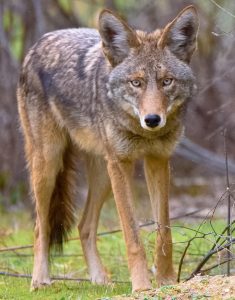
James Opiyo
The obvious and most important way is by reducing mortality, which requires identifying the causes. Several studies in the southeast have shown coyote predation to be a significant source, accounting for up to 84 percent of all deer mortality, and 62 percent of fawn mortality, primarily within the first three weeks of their life. As a result, recruitment and therefore deer numbers are down, causing some southeastern states to consider more restrictive seasons and bag limits on deer. The situation is probably worse in northern states where severe winters stress deer, and deep snow concentrates them into small pockets making them easy prey. Unfortunately, little research has been done in that arena.
Intuition suggests that predator control would be a simple solution. Unfortunately, that’s not necessarily the case. Research, and decades of effort have shown that intensive, concentrated predator control can result in a slight, temporary reduction in predator numbers – and resultant rise in recruitment – in localized areas. Sustaining that type and level of effort is expensive and laborious.
Part of the problem lies with the predator. Coyotes are an incredibly adaptable species. An unmolested pack might consist of alpha male and female and their offspring who reside in and defend a territory. Eventually those youngsters grow up. Some may remain to help defend the territory and assist with the next litter while others disperse. The latter may establish a new territory, if one is available and they can attract a mate. Alternatively, they may simply continue wandering, perhaps mating for a season then moving on. If you remove one or both adults from a pack, there will always be more along to fill the void, and transients filtering through from time to time. Some studies have even shown that removing an established pack actually resulted in higher predator numbers.
Think Outside the Trap
Removing predators isn’t the only way to reduce predation mortality. Often, a more effective approach is to give fawns a better chance of avoiding those predators, which is best accomplished through habitat management, specifically by establishing and maintaining security cover, and there are many ways to go about it. Timber harvesting leaves behind open areas where more sunlight promotes the growth of young plants. A year or two after that open cut, the area will be a tangle of dense briars and saplings – ideal cover for a young fawn. Even selective cuts and timber stand improvement create small openings where sunlight will promote dense understory growth, as will hinge cutting in younger stands.
Another way to produce ideal fawn cover is simply to do nothing. Not every open field needs to be planted in crops or food plots. While it’s less common with the increased demand and economic incentive for production, setting aside some areas and letting natural succession occur can result in excellent cover. While it won’t be the same as full crop production, you may be able to realize some financial gain by enrolling your set-aside in the USDA’s Conservation Reserve Program.
Set the Table
Habitat consists of food, water and the aforementioned cover. We addressed the latter above, to some extent. Improving the former (food) can also improve recruitment, and these two components are not independent of one another. Furthermore, there’s no such thing as too much food. Unlike humans, deer don’t get fat and lazy when there’s an abundance. They’re more fit and better able to avoid predators, not to mention disease and the side effects of stress.
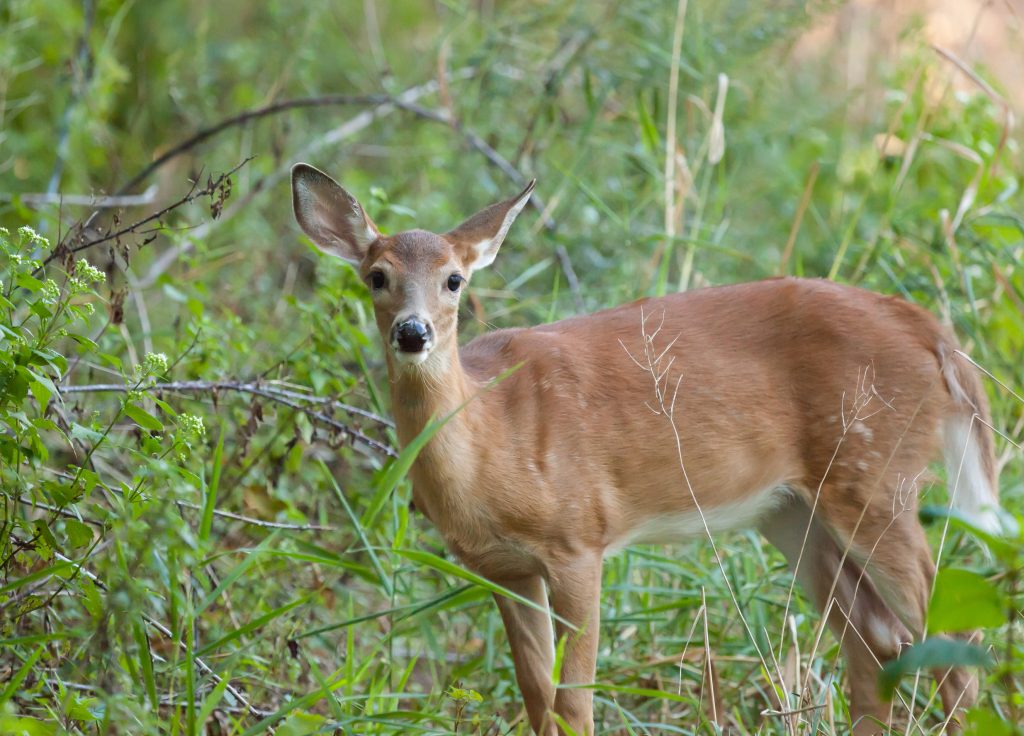
Erin Cadigan
Food plots provide an abundance of food: protein in the warm-season perennial plots and carbohydrates in the cool-season annual plots. There’s enough good advice in the pages of Gamekeepers that we don’t need to go into too much detail here. Suffice to say, the more and more diverse plots you have, the more nutrition you’ll provide over a longer time period. Much the same is true of crops. A Pennsylvania study found that fawns on agricultural land (including food plots) have a better chance of surviving to six months of age than those in forested landscape by a factor of about five percent for every ten percent increase in agricultural land.
Mast orchards offer yet another way to improve and increase both nutrition and cover. Hard mast species like oak and chestnut are the most common and provide a bounty of hard mast that gives deer a better chance to survive the winter. But don’t overlook soft mast. Raspberries, blackberries, mulberries, plums and persimmons are also important, and help fill nutritional gaps like late summer, when herbaceous vegetation is maturing and dying, but hard mast has yet to drop. In time, they form pockets of cover as well.
Any or all of the above can be beneficial, but each will be more valuable if you devise ways to integrate those components so they work in concert. White-tailed deer are considered an edge species, preferring the ecotone or transition from open fields to mature forest. That edge has more food and more cover, so the more edge, the better the habitat. An Auburn University researcher found that fawns in areas with the least amount of edge habitat were more than twice as likely to be eaten by a coyote (the leading cause of fawn mortality) than those in areas with more edge availability.
Instead of putting food plots in one field and soft mast orchards in another, plant soft mast trees and shrubs around the edges of your plots. Large, square or rectangular plots are more agriculturally efficient, and make great feeding plots. But smaller, irregularly-shaped plots are better for fawns to evade predators – the asymmetrical edges reduces long lines of sight and creates more edge.
We mentioned timber stand improvement above as a way to improve cover, but it also increases nutrition. A mature forest provides about 50 to100 pounds of potential deer food per acre. Early successional forests, like those remaining from a selective cut, can produce upwards of 1,000 pounds of forage per acre. Add prescribed burning and you can boost that to 1,500 pounds per acre. The deer get more food and you realize some economic benefit both from timber sales and by leaving the tractor in the barn.
Herd Management
Balancing sex ratios and age structure within the herd offers several benefits to overall herd health, including improved fawn recruitment. The reasons are more evident in the north, where natural selection has confined peak rut to a relatively narrow window. Breeding occurs roughly 200 days before the optimum time for fawning. If fawns are born too early, there won’t be enough nutrition available for them or their mothers; too late and they won’t have grown large enough to survive their first winter.
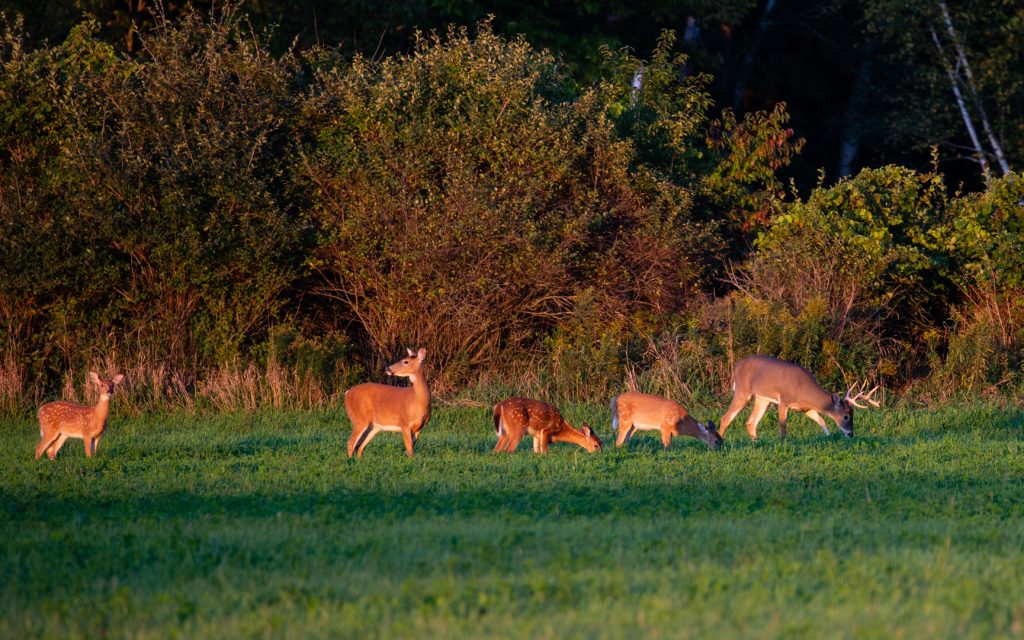
Michael Tatman
There is another benefit to a narrow breeding window. “Predator swamping” or predator satiation is an adaptation among prey animals wherein offspring are produced over a relatively short period of time. When predators are flooded or swamped with potential prey, they can only consume a certain amount. This, in turn, reduces the probability of any individual falling victim to predation. Mother Nature figured this out on her own, but we can always help her, while also helping ourselves.
Harvest
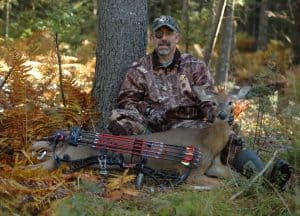
Bob Humphrey
There are some things we as hunters can do as well. It seems intuitive and the research shows that mature does make better mothers. They’ve survived at least 4 years, and managed to avoid hunters, predators, motor vehicles and a host of other potential pitfalls along the way. They’ve learned where and when to find food, where, when and how to hide, and they teach this to their offspring, giving them a better chance to both survive and reproduce. That makes them a valuable asset to the population.
Every situation is a little different and a lot depends on your specific management objectives, but if one of them is improving fawn recruitment you might want to steer your culling efforts away from older, more productive does and more toward younger ones. Obviously, that’s not an easy task, but it can sometimes be a little easier with some guidelines. Yearling does may or may not have fawns so any solo adult doe could remain on your hit list. You can also judge relative size if several does are present, and focus your effort on the smaller ones. And, you can simply see which ones have singlets and which have twins. Focus on the former and leave the latter.
If you spend a lot of time on the land, and especially if you run trail cameras, you begin to become familiar with the habits of individual deer. If that old long-nosed nanny that always has twins seems to favor a particular location, maybe you should avoid that are during hunting season, or at least when your focus is herd management versus headgear.
There’s nothing wrong with taking fawns either. You may take a little ribbing in camp, and you’ll likely want to avoid button bucks, but the meat is tender and they’re a lot easier to get out of the woods. There are also biological reasons to focus on fawns. For starters, there are lots of them in a healthy population, and they have yet to prove their reproductive potential. For now, they’re just more mouths and stomachs. Fawns have higher natural mortality rates than adult deer, but a portion of hunting mortality may be compensatory. A certain number will perish each year, whether by your hands or nature’s, but if you remove some, more of the remainder may survive.
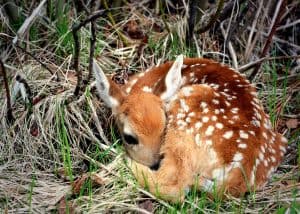
One Small Square
That applies to overall herd management as well. If your deer are overabundant, you need to remove some. That ensures sufficient food and less stress for those that remain, so they’ll all be healthier and have a greater chance of avoiding predators, disease and other mortality sources. Obviously, if your goal is increasing the herd, lay off the does, especially the older ones. While it may seem contrary to your long-term goals of raising more, bigger bucks, it might also be advisable to take a few young ones. You can’t stockpile bucks. The land can only support so many and if you don’t kill them, predators, disease, cars and other bucks will.
Conclusion
Proper planning prevents poor performance. Improved recruitment is just one objective of a wildlife management plan, and a fairly important one. Others might include improving habitat diversity and nutrition, balancing age and sex ratios and setting the stage for a quality hunting experience. As with habitat components, none of these goals is independent. As you put together your plan, consider how each component interacts with the others and the value of your whole property will be even greater than the sum of its parts.








